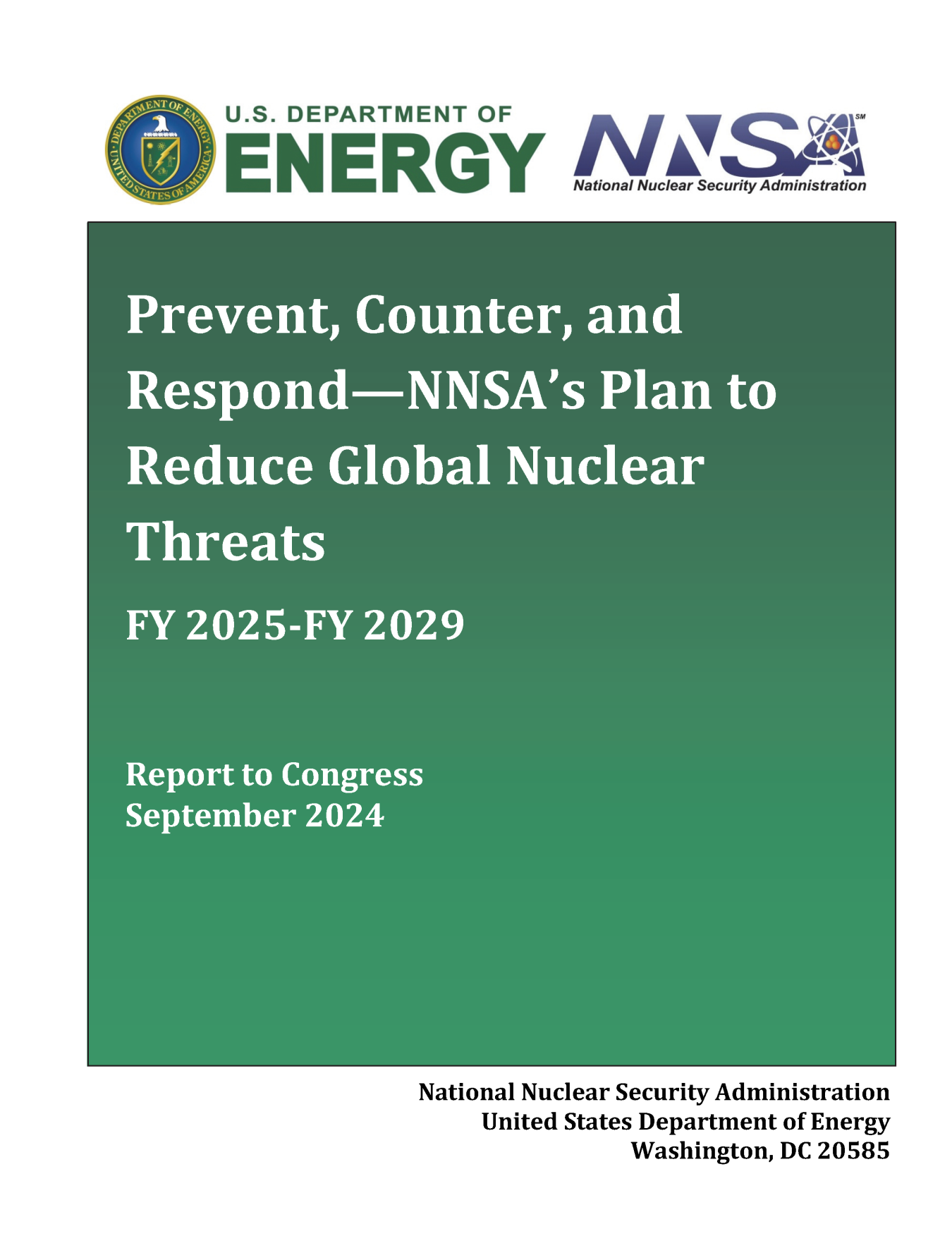This report helps inform our planning and program activities to ensure U.S. national security and advance global nuclear security.
National Nuclear Security Administration
October 4, 2024
The Department of Energy’s National Nuclear Security Administration (DOE/NNSA) is pleased to submit Prevent, Counter, and Respond—NNSA’s Plan to Reduce Global Nuclear Threats (FY 2025–FY 2029). This report outlines how DOE/NNSA applies the unique, cross-cutting capabilities of our resilient and responsive Nuclear Security Enterprise to provide comprehensive nuclear security solutions that protect the American people, our Allies, and our partners in a dynamic world.
In the 2022 National Security Strategy, the United States committed to addressing the “existential threat posed by the proliferation of nuclear weapons” by working closely with our partners and Allies “especially during times of conflict when escalation risks are greater.” The United States will support and strengthen nonproliferation regimes, ensure export control regimes are equipped to tackle “destabilizing emerging technologies,” and align efforts with our partners towards “countries of concern.” We will seek “pragmatic engagement with competitors” on strategic stability and risk reduction and address the enduring threat of weapons of mass destruction terrorism.
This is an unprecedented moment in history. Russia continues its destabilizing behavior, including stationing tactical nuclear weapons in Belarus, “de-ratifying” the Comprehensive Nuclear-Test-Ban Treaty, and deepening ties to Iran and North Korea. China is rapidly modernizing and expanding its nuclear arsenal. The climate emergency and energy security challenges are more urgent than ever, and ongoing conflict in the Middle East reaffirms the need for the United States to be prepared to respond to rapidly evolving crises.
As articulated in the NNSA Strategic Vision, through our innovative, collaborative, and results-driven approach, DOE/NNSA works to forge sustainable solutions that enable global security and stability, maintains the nuclear deterrent, provides nuclear propulsion, and leverages transformative technologies to address emerging challenges. DOE/NNSA uses an integrated strategy to prevent, counter, and respond to nuclear threats. Drawing on the strong technical and policy expertise of its workforce, DOE/NNSA is accelerating efforts to strengthen nonproliferation and enhance nuclear and radiological security worldwide, expanding on existing partnerships with more than 100 agencies and 100 countries worldwide.
These combined efforts to mitigate global nuclear threats are paramount to strengthening U.S. national security and supporting efforts to address climate change. As the United States and countries around the world, including many “nuclear newcomers,” look to nuclear energy to provide clean baseload power, DOE/NNSA remains committed to promoting the safe, secure, and peaceful expansion of nuclear energy while adhering to and setting the highest nonproliferation and nuclear safeguards and security standards. In a volatile international environment, DOE/NNSA continually engages with the international community on best practices, strengthens existing partnerships, and works to establish new ones.
DOE/NNSA works in close collaboration with its national laboratories, plants, and sites, as well as with other Federal agencies to anticipate tomorrow’s nuclear and national security challenges and deliver timely, innovative solutions. In an era of rapidly evolving global threats and a changing technological landscape, DOE/NNSA focuses on investing in a world-class workforce, adaptive and resilient infrastructure, and cutting-edge technological solutions to address current and future challenges. DOE/NNSA’s most important asset is its people, and we place the highest priority on recruiting and retaining a workforce that reflects the diversity, strengths, and the innovative spirit of the American people.

